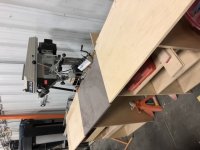Packard
Member
The last time I made cabinet doors, the dark color Advance paint was not tough enough to resist marking from my Blum drilling jig.
The cabinets I am making now are being painted white and should fare better.
But what is "best practice"? Paint first or drill first?
The cabinets I am making now are being painted white and should fare better.
But what is "best practice"? Paint first or drill first?




